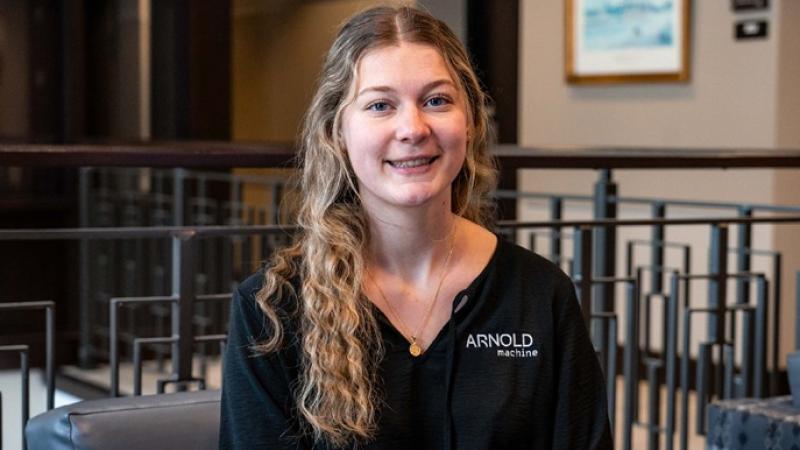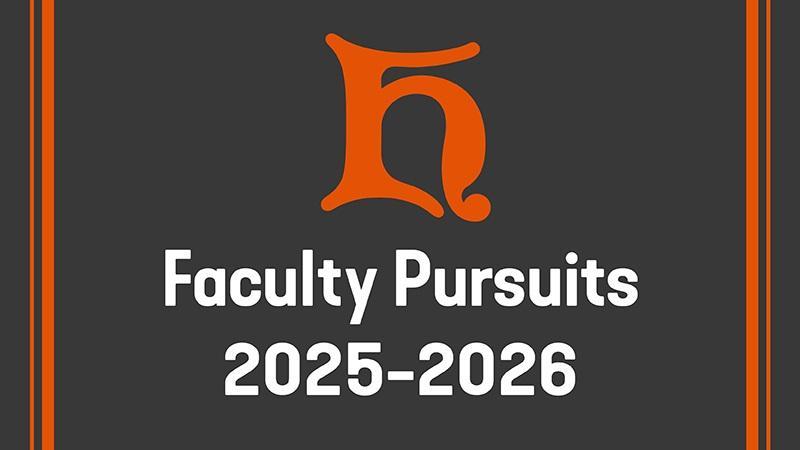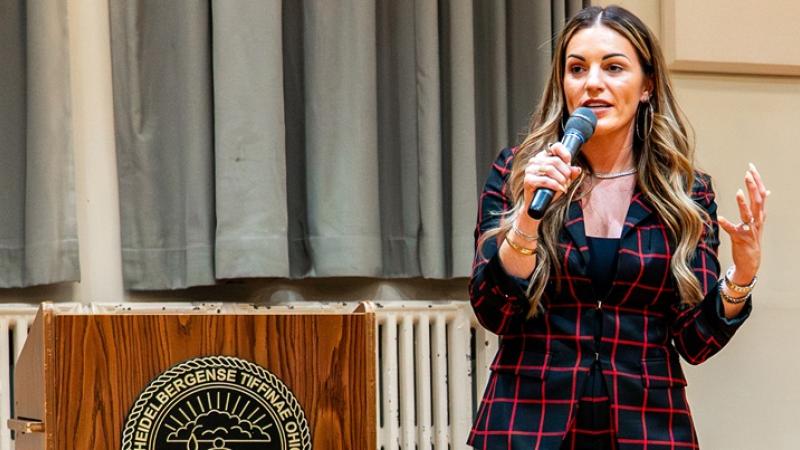Final gift, first lessons: Gratitude for body donors who teach beyond life
On Thursday morning, Herbster Chapel held a quiet kind of heaviness, the kind that comes not from sadness, but from deep gratitude. Heidelberg students, faculty, alumni, and community members gathered for one of the University’s most meaningful traditions: the Cadaver Body Donor Appreciation Ceremony.
It’s a ceremony honoring a lab that most people never see, but for the students in Heidelberg’s anatomy program, it’s one of the most important moments of their academic careers. It’s the day they pause their studying and their exams and step back to honor the individuals who made their education possible – the donors who, in their final act, chose to help strangers learn to heal.
‘Silent teachers’ shape future healers
This year, three individuals served as Heidelberg’s “silent teachers” for Dr. Pam Faber's anatomy students. We will never know their names. We will never know their families or their stories. But what we do know is that their final gift will echo through the futures of dozens of students preparing for careers.
Senior Grant McMaster opened the ceremony by welcoming everyone and thanking the donors for the profound impact they’ve had on his class. Music from Izea Joseign Dimaun, ’28, filled the chapel and set a reflective tone that carried through the rest of the service.
An invocation from Abigail Stine reminded the community that behind every donor was a full life. “We gather not only to thank them, but to recognize the deep humanity of their gift. Their bodies carried them through a lifetime of moments, and now they carry us forward in our
journey to heal, to serve, and to understand,” she said.
A Heidelberg tradition decades in the making
President Rob Huntington spoke next, recognizing the strength of Heidelberg’s long partnership with The Ohio State University’s Body Donation Program. For decades, this relationship has allowed Heidelberg students to have rare early access to hands-on anatomical study.
His message was simple but powerful: This program exists because of the generosity of donors, their families, and the people who believe in Heidelberg’s mission to prepare the next generation of caregivers.
Learning goes far beyond textbooks
As the ceremony continued, students shared what the experience had meant to them.
Grant spoke again, reflecting on what it feels like to learn from a real human body – something that, as he pointed out, only a small percentage of students entering graduate programs ever get to do as undergraduates. He described the donors’ gift as “an honor I do not take lightly,” and many in the chapel nodded along.
Dr. Morgan Kocher, Assistant Professor of Exercise Science, talked about his own experiences working in anatomy labs across the country. His story about a husband who walked to the outside wall of the anatomy lab just to feel close to his late wife, a donor, was a reminder of the real, personal lives behind these silent teachers.
Honoring three lives with light
The candle lighting ceremony, led by Logan Winstead, Grace Dohanyos, and Abigail Stine, honored each of the three donors individually.
The BIO 403 class read short “voices” written from the perspective of the donors. These reflections imagined what the donors might tell the students if they could speak: messages about purpose, legacy, and the way their stories continue through the hands of future caregivers.
As the ceremony came to an end, Kacy Connolly spoke on behalf of the BIO 403 class. Her words captured what so many students feel but often struggle to express: “Our bodies are physical ties to the world, and giving something so important and personal is a selfless act that can’t be appreciated nearly enough.”
Her class represents a wide range of future paths from Physical Therapy, Nursing, Dentistry, Medical School, Veterinary School, the MBA Program, and more. However, they all share one unifying experience: the donors who taught them lessons no textbook ever could.
When the final thank-yous were spoken and the candles were extinguished, the message of the ceremony remained clear: Even in death, these donors continue to teach. Their generosity lives on in every student they helped shape and in every patient those students will one day serve.




